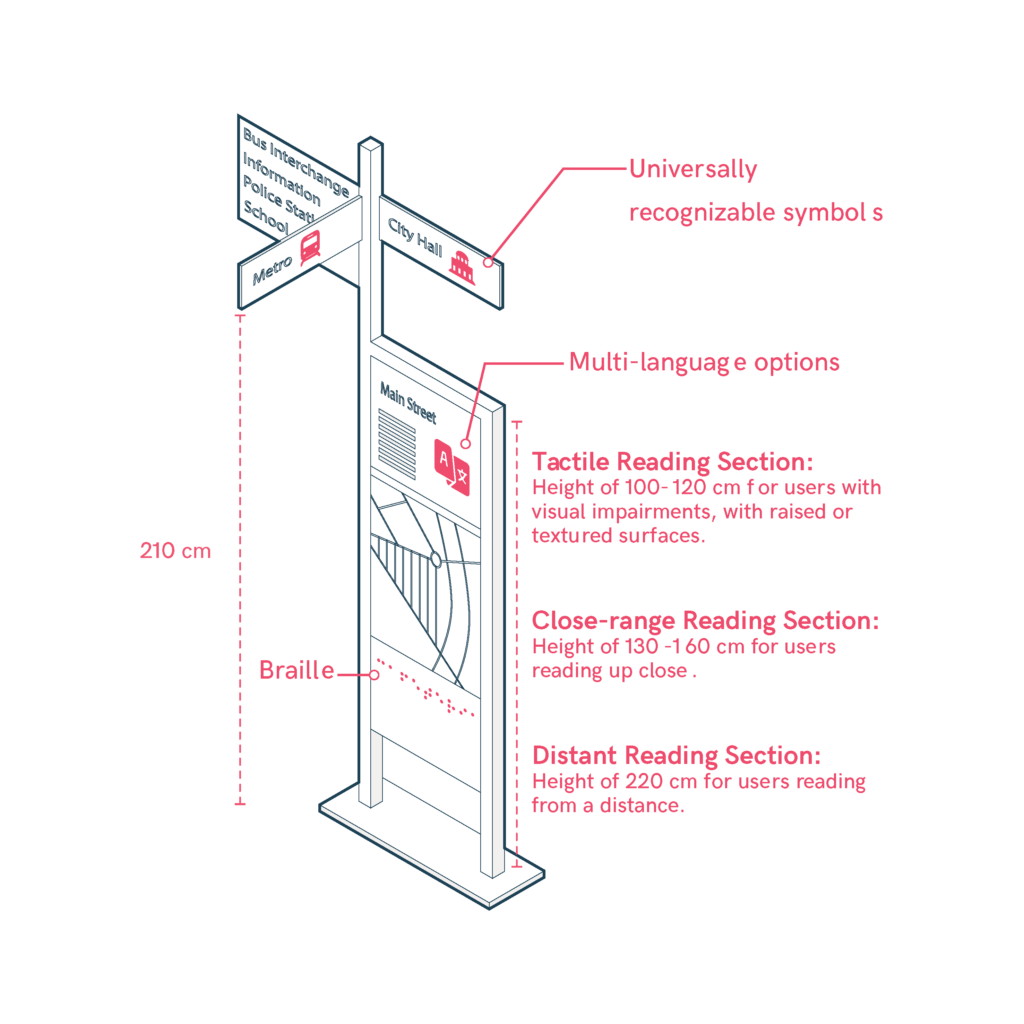Totems in Wayfinding Systems
Wayfinding totems are a critical component of effective urban navigation systems. They act as centralized hubs for orientation and decision-making in public spaces. A well-designed totem can significantly reduce navigational stress, improve spatial understanding, and ensure equitable access — particularly for people unfamiliar with the area, such as tourists or new residents. Clear, intuitive, and multilingual signage is especially important when navigating unfamiliar environments, which can otherwise lead to frustration and discourage exploration or travel.

-
Use high-contrast and consistent color schemes to improve visibility.
-
Ensure text is legible and paired with universally recognizable pictograms or icons to minimize language barriers.
-
The more graphic and visual the totem is, the better — this helps non-native speakers and people with low literacy.
-
Include clear indications of distances in both meters and estimated time (e.g., walking or cycling minutes) to help users plan better.
-
Use a hierarchical structure for content display:
– Tactile Reading Section (100–120 cm): Raised or textured information for users with visual impairments.
– Close-range Reading Section (130–160 cm): Detailed information for pedestrians reading up close.
– Distant Reading Section (around 220 cm): Key highlights visible from a distance. -
Incorporate voice narration or sound prompts for users with visual impairments.
-
Include Braille and raised textures to support inclusive navigation.
-
Offer multi-language options and simple, intuitive interfaces (e.g., touchscreens) for broader accessibility.
-
Integrate QR codes that lead to additional information — but ensure that all essential content is accessible without needing to scan the code, since not all users will have mobile data, smartphones, or digital literacy.
-
Place totems at strategic decision points, such as junctions, station exits, or large plazas where orientation is critical.
-
Ensure visibility from multiple angles and long distances.
-
Use weather- and vandal-resistant materials for long-term durability.
-
Include a sturdy lower zone to prevent damage from impact or wear.
Sources
- https://biblioteca.fundaciononce.es/publicaciones/colecciones-propias/coleccion-accesibilidad/accesibilidad-universal-y-diseno-para
- https://www.punt6.org/es/books/espacios-para-la-vida-cotidiana/
- https://www.une.org/encuentra-tu-norma/busca-tu-norma/norma?c=N0043689
- https://observatoriodelaaccesibilidad.es/wp-content/uploads/2022/05/Guia-de-Accesibilidad-Cognitiva-en-Centros-de-educacion-infantil-y-primaria.pdf
